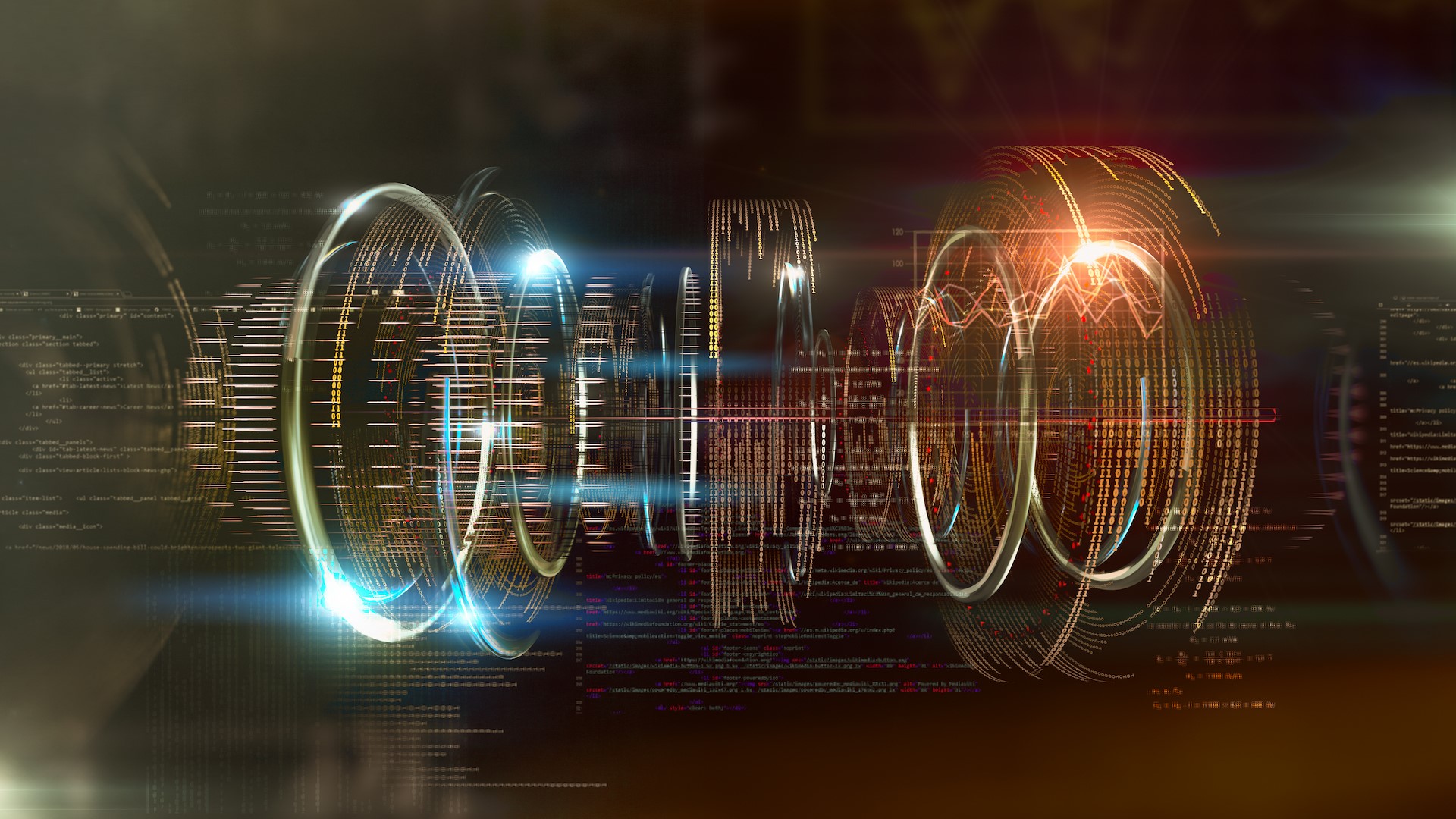In the unprecedented advancements unveiled in the contemporary scientific landscape, the amalgamation of artificial intelligence (AI) and quantum mechanics stands as a harbinger propelling neutrinovoltaic technology to frontiers once deemed unreachable. This text embarks on a meticulous unraveling of the nuances that fortify the development of this revolutionary technology, where the harmonious synergy of AI and quantum mechanics lays the foundation of the promising domain of neutrinovoltaic technology.
At the onset, it is pivotal to elucidate the groundbreaking construct of neutrinovoltaic technology. Rooted in the utilization of neutrinos, elusive particles that permeate the cosmos, this technology converges upon harnessing the incessant streams of these particles as well as other non-visible radiations to generate energy. The Neutrino Energy Group, a frontrunner in this realm, envisages a future thriving on the infinite energy reservoir housed in neutrinos, seeking to translate this vision into a tangible reality.
Deciphering the Quantum Mechanics of Neutrinos
Neutrinos are subatomic particles that are nearly massless, charge-neutral, and travel close to the speed of light, interacting weakly with matter. Quantum mechanics facilitates the deep understanding and manipulation of these particles, thereby serving as the cornerstone in the development of neutrinovoltaic technology. Here, the principles of wave-particle duality come to the forefront, illustrating the behavior of neutrinos both as particles and waveforms. Furthermore, quantum tunneling, another cardinal concept, plays a pivotal role in the technology, aiding the transit of neutrinos and other non-visible radiations through dense materials.
Delving deeper, we venture into the complex world of material science that brings quantum mechanics to a tangible plane. Here, innovative materials characterized by a composite amalgamation foster the initiation of a continuous cascade of electrons. At the heart of this amalgamation is the judicious integration of materials such as graphene, silicon, and a nurturing carbon matrix, designed meticulously to trigger the aforementioned electron cascade. The strategic layout of these materials, guided by the principles of quantum mechanics, ensures optimal engagement with the incessant stream of neutrinos and other non-visible radiations, forging a pathway to a consistent energy output.
Artificial Intelligence: The Master Orchestrator
As we steer towards artificial intelligence“s role in this groundbreaking initiative, we perceive AI as a master orchestrator harmonizing the multifaceted processes central to neutrinovoltaic technology. AI plays an instrumental role in overseeing the intricate system dynamics, right from the orchestration of the material components to the real-time optimization of energy harvesting processes.
AI encompasses an array of sub-domains that find extensive applicability in nurturing the growth of neutrinovoltaic technology. Predictive analytics stands as a salient feature, with AI algorithms forecasting the flux of neutrinos and other non-visible radiations and thereby orchestrating the energy harvesting modules to operate at peak efficiency. Moreover, AI“s prowess extends to sophisticated energy management systems, where it judiciously governs the storage and utilization of harvested energy, fostering an ecosystem of self-sustaining energy systems that are acutely responsive to the dynamic neutrino flux.
Machine learning, a subset of AI, merits special mention in the continuous evolution and optimization of neutrino detection mechanisms. Here, deep learning algorithms work tirelessly in discerning patterns in the neutrino flux, thereby enhancing the efficiency of energy conversion modules over time. The data-driven insights furnished by machine learning facilitate the design of next-generation neutrinovoltaic systems characterized by enhanced efficacy and robustness, steering toward a future of unprecedented energy security.
A discussion on AI and quantum mechanics remains incomplete without the nod to quantum computing, a burgeoning domain that stands as a vanguard in simulation and modeling endeavors. Quantum computers, operating on qubits, enable the simulation of complex quantum phenomena integral to understanding neutrino behaviors at a granular level. These high-fidelity simulations foster the iterative refinement of neutrinovoltaic technology, driving continuous innovation in material science and system dynamics.
The Neutrino Power Cube and Pi Car Project: A Case in Point
At the forefront of the tech revolution where artificial intelligence meets quantum mechanics, the Neutrino Energy Group is pioneering unprecedented advancements. The Neutrino Power Cube and the Pi Car initiative stand as beacons of this synergy, ushering in an era where imagination meets reality, and the future is within our grasp.
The Neutrino Power Cube stands as a paragon of innovation in the sphere of clean energy solutions. Housed within a sleek cabinet, this compact and fuel-free power generation system promises a substantial net output of 5-6 kW. Its unique assembly leverages an array of power generation modules, meticulously orchestrated by an advanced control system. Beyond its proficient performance, it operates in silent harmony with its surroundings, presenting no concerns of detrimental radiation – a truly eco-friendly innovation. As it gears up for licensed industrial production, eyes are set on a colossal manufacturing facility in Korea, primed to launch either in 2023 or at the dawn of 2024.
As we peer into the not-so-distant future, the horizon seems luminous with the expectation of a production crescendo reaching a staggering 30 GW annually by 2029, set to redefine the contours of the global energy map. A living testament to the far-reaching potentials of neutrinovoltaic technology, the Neutrino Power Cube is where quantum mechanics, artificial intelligence, and pioneering materials converge, offering not just energy, but a reliable, efficient, and revolutionary pathway to a greener tomorrow.
Unveiling a revolution in the transportation landscape, Neutrinovoltaic technology is the powerhouse behind the unprecedented Pi Car project. By channeling a rich spectrum of environmental energies – from omnipresent neutrinos to thermal disparities and electromagnetic waves – this self-charging electric marvel promises up to 100 kilometers of travel from just an hour“s exposure to these natural energy streams.
The Pi Car“s framework, a masterpiece of engineering, is crafted from a dynamic „material sandwich“ comprised of intertwined layers of graphene and silicon housed within a robust carbon matrix. This intricate mosaic facilitates micro-vibrations that generate a continuous stream of electrons, or direct current. Meanwhile, state-of-the-art supercapacitors and batteries store the harnessed energy, meticulously regulated by a finely tuned AI unit that orchestrates propulsion, catapulting vehicular technology into a new dimension.
The crème de la crème of international engineers and designers are steering this €3 billion endeavor, passionately working to transcend conventional transportation norms. Bidding farewell to traditional charging setups and reducing reliance on fossil fuels, the Pi Car is not just a vehicle, but a vision of a sustainable, empowered future. Watch this space as the team gears up to unveil this technological tour de force in the coming three years, setting a new benchmark in electromobility.
Both the Neutrino Power Cube and the Pi Car initiative are more than mere technological advancements; they represent a future where AI and quantum mechanics come together to craft solutions that are autonomous and harmonious with the environment, reshaping our understanding of what is possible in the realms of energy generation and sustainable transportation.
The Road Ahead: Charting Untraveled Territories
As we venture into the future, it is anticipated that the collaboration of AI and quantum mechanics will continue to foster unprecedented innovations in the neutrinovoltaic technology landscape. It beckons a future where buildings, appliances, and transportation mediums harness the untapped potential of neutrinos and other non-visible radiations, guided by the intelligent oversight of AI systems. In conclusion, the confluence of artificial intelligence and quantum mechanics charts a revolutionary trajectory in the development of neutrinovoltaic technology. Through a harmonious synergy, these technologies usher in a new epoch characterized by sustainability and endless energy potential, leveraging the untapped reservoirs of neutrino energy streams that permeate our cosmos. The detailed exploration of the quantum behaviors of neutrinos and other non-visible radiations, guided by the vigilant oversight of artificial intelligence systems, foresees a future powered by an energy source as infinite and promising as the mathematical constant Pi, driving humanity towards a future of infinite possibilities, rooted in scientific innovation and technical prowess.
The Neutrino Energy Group has established itself as a leading international consortium of companies and scientists in the field of converting radiation spectra into electrical energy since its founding in 2008. With a worldwide network of partners, scientists, and a range of cooperating international research centers, the Neutrino Energy Group is the main player in applied research and development in the field of energy harvesting.
In recent years, the Neutrino Energy Group has achieved significant progress, particularly in the development of Neutrinovoltaic technology.
Scientists from the scientific advisory board of the company conduct continuous research and development work in various research centers worldwide, with a specific focus on increasing the efficiency of Neutrinovoltaic technology in the coming years. The Neutrino Energy Group follows a decentralized, interdisciplinary, and global research strategy to consolidate and fully exploit the immense potential of their discoveries. They aim to engineer and employ artificial intelligence to develop these insights into novel autonomous and decentralized energy supply systems of the future for marketable deployment.
Their years of dedicated work have already led to a series of patents and groundbreaking research results, enabling the practical understanding and establishment of Neutrinovoltaic technology shortly. The Neutrinovoltaic technology represents a genuine and ecologically honest, autonomous, and base-load-capable 24/7 renewable energy solution.
Company-Contact
Neutrino Energy Group
Holger Thorsten Schubart
Unter den Linden 21
10117 Berlin
Phone: +49 30 20924013
E-Mail: 
Url: https://neutrino-energy.com
Press
Pressekontakt Heiko Schulze
Heiko Schulze
Haus der Bundespressekonferenz 0413
10117 Berlin
Phone: +49 30 726262700
Fax: +49 30 726262701
E-Mail: 
Url: http://www.neutrino-energy.com
Die Bildrechte liegen bei dem Verfasser der Mitteilung.







